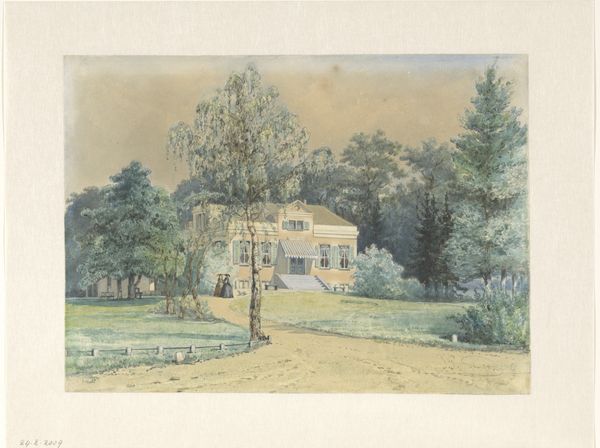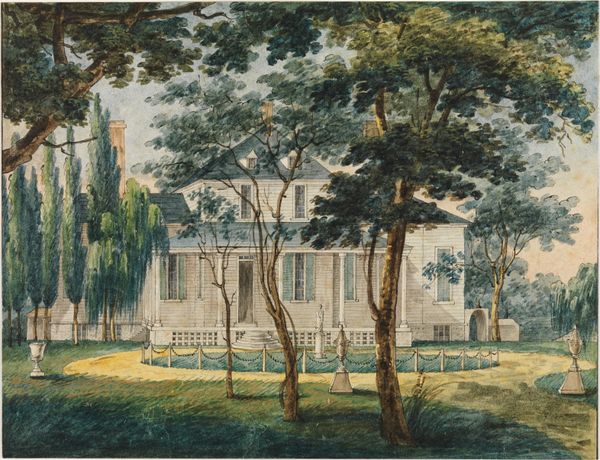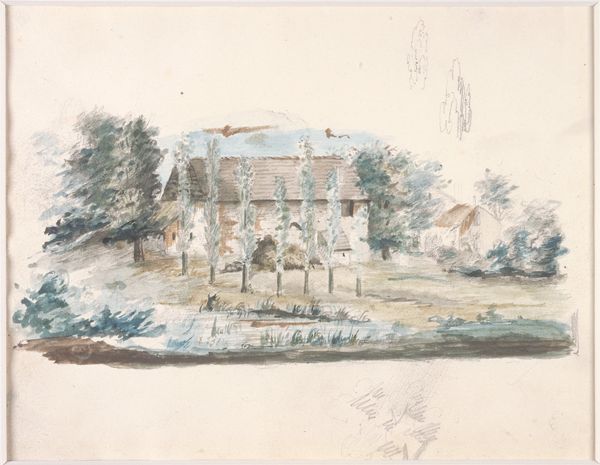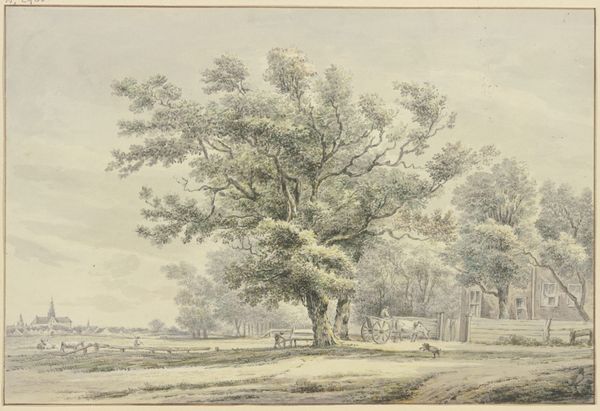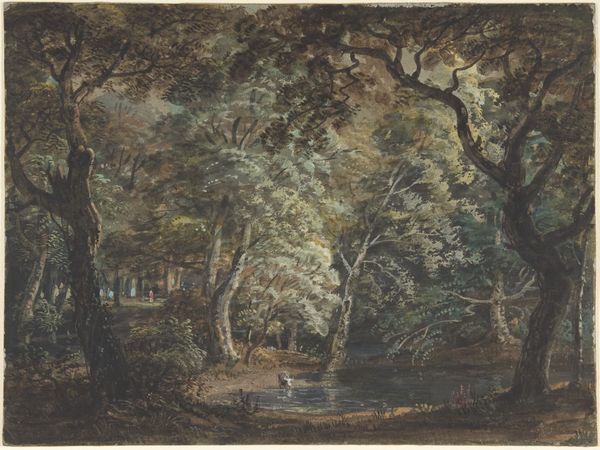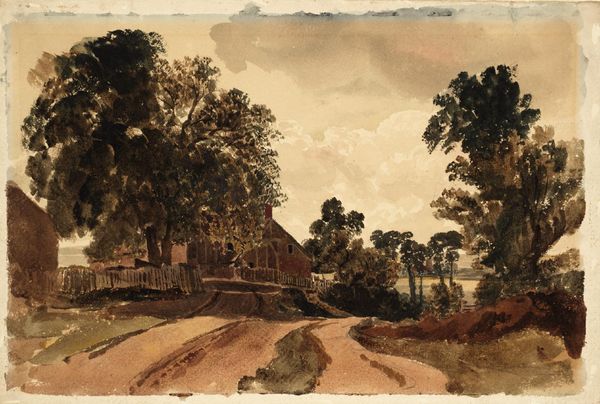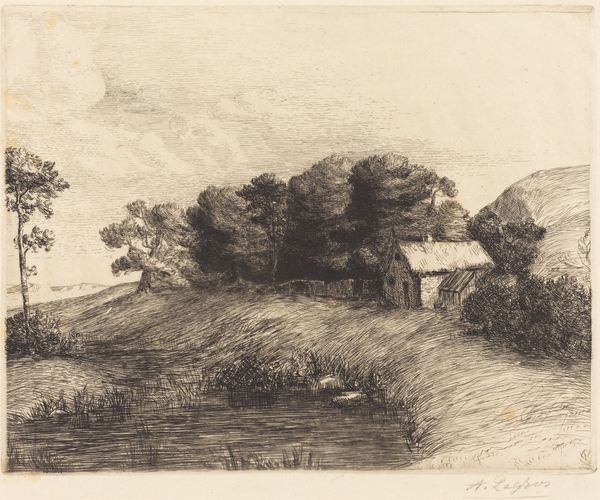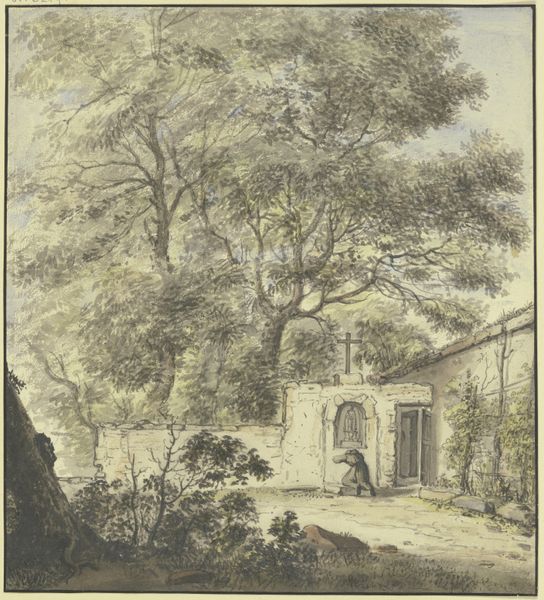
Dimensions: sheet: 19.05 × 27.94 cm (7 1/2 × 11 in.)
Copyright: National Gallery of Art: CC0 1.0
Editor: So this watercolor landscape is called "Cloetis" by William Brenton Boggs, around 1855. It feels…quiet? Sort of a contained scene. I’m drawn to the figure in the red coat – almost like a defiant spot of color in all the muted tones. How do you read this work? Curator: The ‘quiet’ you perceive might reflect the complexities of viewing landscape through a 19th-century lens, especially considering questions of land ownership and social class. Observe the solitary figure, indeed a visually striking element. Do you consider that red coat a marker of class, profession, or perhaps something else entirely, against the backdrop of that grand estate? Editor: Hmm, maybe it is a symbol. It definitely makes him stand out. But what about the women on the porch. And are the others walking in the distance related to this "land ownership?" Curator: Precisely. Consider how the figures are placed in relation to the architecture and the landscape. This piece enters a dialogue with gendered spheres and how bodies occupy space and engage with the concept of property during that period. The architectural features denote not just shelter but dominion. The very act of depicting the landscape becomes an exercise in power, subtly underscoring hierarchies present in the mid-19th century. This artist and artwork participate in, but also subtly critique those established conventions of both class and gender. Editor: I hadn’t thought about landscape art being connected to social power structures. Curator: It's easy to see the aesthetic beauty, but consider also the unspoken stories. By exploring these historical power dynamics, we can unpack how seemingly idyllic scenes like “Cloetis” reflect – and refract – the complexities of social order, land, and identity. Editor: This gives me a new perspective, for sure. I need to ask more questions.
Comments
No comments
Be the first to comment and join the conversation on the ultimate creative platform.
